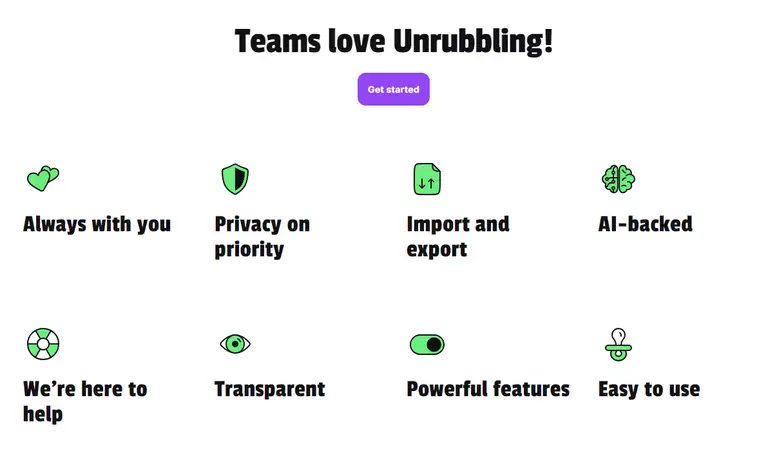Time management has always been a delicate dance.
But with a DuPont schedule? It's like performing a high-energy tango.
Picture this: you're twirling through an intricate routine of work and rest, all in the pursuit of productivity and balance.
In this article, we dive into the world of the DuPont schedule – an arrangement that promises extended periods of rest while maintaining a full work status.
We'll discover its secrets, explore the pros and cons of this unique scheduling approach, and more.
What is a DuPont schedule?
A DuPont schedule, also known as a compressed work schedule, is a type of work arrangement where employees work longer hours per day but have more consecutive days off. It involves dividing the standard workweek into fewer but longer shifts, typically consisting of 10- or 12-hour workdays.
Examples of a DuPont shift schedule in practice
The most common DuPont schedule is the 4-3-3-4 shift pattern. This schedule allows for extended periods of time off while maintaining a full-time work status.
But there are other DuPont shift configurations and patterns worth exploring and we'll discuss them below.
4-3-3-4
Employees work four consecutive days, followed by three rest days, and then three consecutive work days before getting four more days off.
Working this way allows for extended periods of time off while maintaining a full-time work status.
Here's a detailed shift description for a doctor working in a hospital using the 4-3-3-4 work schedule:
Week 1:
Monday to Thursday: Work (4 consecutive days)
Friday to Sunday: Rest (3 consecutive days)
Week 2:
Monday to Wednesday: Work (3 consecutive days)
Thursday to Sunday: Rest (4 consecutive days)
Repeat the cycle from Week 1.
In this schedule, the doctor works four consecutive days in Week 1 and Week 2, providing continuity in patient care. They then enjoy three consecutive days off to rest and rejuvenate.
This pattern offers a balance between work commitments and time for personal activities and relaxation.
3-3-4-4
Employees work three consecutive days, followed by three rest days, and then four consecutive work days before getting four more days off.
This type of shift provides a shorter workweek and longer weekends.
Here's a detailed shift plan for a construction worker working on a construction site using the 3-3-4-4 work schedule:
Week 1:
Monday to Wednesday: Work (3 consecutive days)
Thursday to Saturday: Rest (3 consecutive days)
Sunday: Work (1 consecutive way)
Week 2:
Monday to Wednesday: Work (3 consecutive days)
Thursday to Sunday: Rest (4 consecutive days)
Repeat the cycle from Week 1.
In this schedule, the construction worker works four consecutive days in Week 1 and three consecutive days in week 2. They can also take advantage of the first three and then four consecutive days off.
This pattern is awesome for giving employees plenty of time off.
5-2
Employees work five consecutive days and then have two rest days.
A 5-2 shift pattern is a traditional Monday-to-Friday work schedule commonly followed in many industries.
Here's a detailed shift cycle for a teacher using the 5-2 work schedule:
Week 1:
Monday to Friday: Work (5 consecutive days)
Saturday to Sunday: Rest (2 consecutive days)
Repeat the cycle every week.
This type of working schedule allows for shorter working days at the cost of fewer days off.
9-80
Employees work eight nine-hour days and one eight-hour day in a two-week period, resulting in 80 hours of work in two weeks.
This makes it possible for employees to have every other Friday off, creating a long weekend.
Here's a detailed schedule for a bartender following the 9-80 work schedule:
Week 1:
Monday to Thursday: Work (4 consecutive days)
- Shift hours: 12:00 PM to 9:00 PM (9 hours)
Friday: Work (1 day)
- Shift hours: 12:00 PM to 8:00 PM (8 hours)
Saturday to Sunday: Rest (2 consecutive days)
Week 2:
Monday to Thursday: Work (4 consecutive days)
- Shift hours: 12:00 PM to 9:00 PM (9 hours)
Friday: Rest (1 day)
Saturday to Sunday: Rest (2 consecutive days)
In this schedule, the bartender works four consecutive nine-hour shifts from Monday to Thursday in both weeks, totaling 36 hours. On Friday of the first week, the bartender works an eight-hour shift to complete the 80-hour work period. The following Friday of the second week is a designated day off, creating a long weekend for the bartender.
12-hour shift schedule
Employees work longer shifts, typically 12 hours, for a certain number of consecutive day shifts (or night shifts), followed by an equal number of rest days.
This 12-hour schedule pattern is common in industries that require continuous operations, such as manufacturing plants, healthcare, and emergency services.
Here's a detailed schedule template for a police officer following the 12-hour shift pattern:
Week 1:
Monday: Work (1 day, 12 hours)
Tuesday: Work (1 day, 12 hours)
Wednesday: Rest (1 day)
Thursday: Rest (1 day)
Friday: Work (1 day, 12 hours)
Saturday: Work (1 day, 12 hours)
Sunday: Rest (1 day)
Week 2:
Monday: Rest (1 day)
Tuesday: Work (1 day, 12 hours)
Wednesday: Work (1 day 12 hours)
Thursday: Rest (1 day)
Friday: Rest (1 day)
Saturday: Work (1 day, 12 hours)
Sunday: Work (1 day, 12 hours)
Week 3:
Monday: Rest (1 day)
Tuesday: Rest (1 day)
Wednesday: Work (1 day, 12 hours)
Thursday: Work (1 day, 12 hours)
Friday: Rest (1 day)
Saturday: Rest (1 day)
Sunday: Work (1 day)
Week 4:
Monday: Work (1 day, 12 hours)
Tuesday: Rest (1 day)
Wednesday: Rest (1 day)
Thursday: Work (1 day, 12 hours)
Friday: Work (1 day, 12 hours)
Saturday: Rest (1 day)
Keep on following the structure of 2 working days and 2 off days to maintain the schedule.
This twelve-hour shift pattern allows for continuous coverage and ensures that there are always police officers available for duty while providing longer rest periods to mitigate fatigue and promote work-life balance.
The pros of using a DuPont schedule
DuPont schedules have fans both in employers and employees for various reasons.
Increased work-life balance
DuPont schedules provide more flexibility in managing personal and family commitments.
That's because employees have longer stretches of days off duty to spend with loved ones or engage in recreational activities.
In times when work-life balance is more important than pay based on research, this is a very attractive advantage that may even reduce employee turnover. Your people have more time for their personal life, and the general employee well-being improves as they have more hours per week to dedicate to their lives.

Improved productivity
Some studies suggest that compressed work schedules, like those in DuPont schedules, can lead to increased employee productivity.
Employees may feel more motivated to complete tasks efficiently, knowing they have plenty of rest time as a reward.
Reduced childcare costs and commute times
With fewer workdays, your employees can benefit from the elimination of commute time, and save money.
What's more, they may potentially reduce childcare expenses by having more days off to spend with their children.
Thanks to this, their job satisfaction may be higher. It's all about knowing your employee preferences - some of them may prefer extended shifts and overtime hours, while others are not fans of excessive overtime.
Extended mini vacations
The longer periods of consecutive days off in a DuPont schedule allow employees to enjoy extended mini vacations.
This creates opportunities for extra break times, relaxation, and pursuing personal interests.
Once again, this is a great way of maintaining employee satisfaction.
The cons of using a Dupont shift schedule
Like any other thing in the world, DuPont schedules don't go without potential risks and cons.
Working long days and hours
DuPont schedules often require employees to work longer shifts or consecutive days.
This can result in fatigue , burnout, and reduced work-life balance for those who struggle with long working hours.

Limited flexibility
While DuPont schedules offer extended time off, they may limit flexibility in terms of choosing specific rest days or adjusting work hours.
Employees may need to adhere strictly to the predetermined schedule, which may not accommodate individual preferences or needs.
Disrupted social life
Depending on the schedule pattern, employees on a DuPont schedule may have days off that differ from their family and friends. This could result in difficulties trying to synchronize social activities or spend quality time together.
They may miss out on family events and gatherings and in general, have less family time, which can be a huge potential challenge to anyone caring for their young or elderly.
The potential strain on employee health
Working long hours and consecutive shifts can have physical and mental health implications. Fatigue, sleep disturbances, and increased stress levels may occur. That's especially true if employees don't have enough time for rest and recovery after getting just a few hours of sleep.
Circadian rhythms in your employees' lives can get disrupted. The extended hours can break their sleep patterns. If you use this type of shit, make sure to get feedback from employees on how it affects their health and personal lives.

Industries that can use the DuPont shift schedule
A DuPont schedule has found its practitioners in various industries.
Manufacturing
Many manufacturing companies use DuPont schedules to ensure round-the-clock production and optimize equipment utilization.
Energy and utilities
Power plants, oil refineries, and utility companies often operate on DuPont schedules. They do this to ensure continuous operation and maintenance of critical infrastructure. Having round-the clock operations is crucial for public safety and operational continuity is key here.
Healthcare
Hospitals, emergency services, and other healthcare facilities frequently use DuPont schedules to provide 24/7 patient care and staffing coverage. Shift scheduling is key in this industry and traditional labor laws don't apply.
Hospitality and tourism
Hotels, resorts, and restaurants often adopt DuPont schedules. This way, they are able to accommodate varying shifts and ensure seamless customer service throughout the day.
Transportation and logistics
Airports, shipping companies, and transportation providers rely on DuPont schedules as well. Thanks to this working pattern, they get to maintain staffing fluctuation, manage shifts, and ensure efficient movement of goods and people.

Call centers and customer support
Organizations with call centers or customer support teams use DuPont schedules to provide uninterrupted assistance to customers across different time zones. It's important to have full-time employees who cover shifts very meticulously in this industry.
Security and Law Enforcement
Police departments, security agencies, and correctional facilities take advantage of DuPont schedules too. This often happens in the form of 2 twelve-hour shifts, followed by 2 consecutive rest days. In this case, such working patterns ensure constant security coverage and emergency response.
Retail
Some retail businesses, especially those operating in 24-hour formats or with multiple shifts (e.g. gas stations), use DuPont schedules to manage staffing and meet customer demands, all the while keeping smooth operations and avoiding huge overtime costs.
Need to keep track of a DuPont shift schedule?
That's a wrap! We hope the idea of DuPont schedules is now crystal clear to you.
If after reading this article you're considering implementing this work pattern in your company, we come with a bit of help.
Time tracking in these conditions may be challenging at times. This is why you can use Unrubble to make sure your employees are always giving their best.
Unrubble is a helpful tool for employers who want to implement the DuPont schedule in their workplace.
- Unrubble simplifiestime tracking,
- It makes it easy tocreate DuPont work schedules, and
- It helps manageemployee leaves.
With Unrubble, employers can:
- save time,
- automate tasks, and
- ensure smooth workflow management, all the while improving employee morale.
It's a user-friendly solution that turns chaos into stability, making it perfect for implementing the DuPont schedule effectively.
Try it out, free of charge, for work time management and much more.

FAQ
What is a DuPont shift schedule?
A DuPont shift schedule refers to a work schedule pattern where employees work a specific sequence of consecutive work days followed by a set number of consecutive rest days.
How many hours of work are there in a DuPont shift schedule?
The shift lengths depend on the specific DuPont shift schedule you're on. You could work based on a 12-hour shift schedule, just like you could work 8-hour shifts. Everything depends on the shift sequence or shift plan you are on. What's more, you can always establish how many hours per week you'll work with your employer.
Are there night shifts in a DuPont shift schedule?
There can be both day shifts and night shifts in DuPont shift schedules. Different DuPont shift schedule templates propose various schedules, e.g. 12-hour work shift schedules at night or day, or 8-hour shifts just at night. Don't worry though - DuPont shift schedules grant you plenty of rest between shifts, so you will get plenty of sleep between shifts.
Is a DuPont shift schedule the same as a 4-week cycle of working?
No, a DuPont shift schedule is not the same as a fixed four-week cycle of working. A DuPont shift schedule follows a specific pattern of consecutive work days (e.g. consecutive night shifts or day shifts) and rest days, typically in shorter cycles like 4-3-3-4, when a four-week cycle may be too much.
What are some good DuPont shift schedule templates?
Some good DuPont shift schedule templates include the 4-3-3-4 shift pattern, as well as variations like 3-4-4-3, 5-2-5-2, or 6-3-6-3. The choice of shift schedule examples depends on the specific needs and preferences of the organization or industry implementing the schedule. This article demonstrates some interesting and useful templates you can use.








